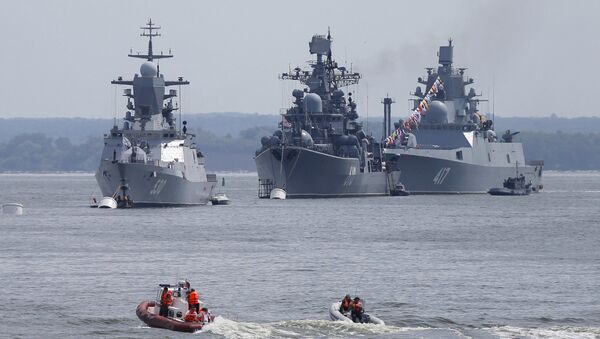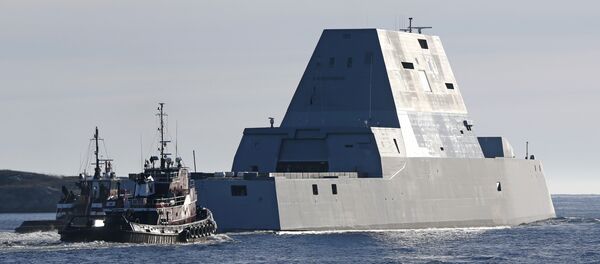In October, the Russian military launched 18 Kalibr-M cruise missiles from warships stationed in the Caspian Sea. Travelling over 1,500 miles, these projectiles struck terrorist targets in Syria, destroying key components of Daesh, also known as ISIL/the Islamic State.
While this action was clearly aimed at sending a strong message to terrorist groups in Syria, the demonstration appears to have also had an impact on the Pentagon. In a new report from the US Navy’s intelligence branch, the US military expresses concerns of a "newly awakened" Russian navy.
"Russia has begun, and over the next decade will make large strides in fielding a 21st century navy capable of a dependable national defense [and] an impressive but limited presence in more distant global areas of interests…" reads the report, entitled "The Russian Navy: A Historic Transition."
The report is authored by George Fedoroff, the US Office of Naval Intelligence’s top expert on Russia, and based on the Kremlin’s growing fleet of ships and submarines, which currently includes 186 vessels. Fedoroff also took the Russian Navy’s state-of-the-art weaponry into consideration, as well as the resolve of Russian sailors.
According to Fedoroff, the United States has underestimated Russian military capabilities since the end of the Cold War. Now, for the first time in 24 years, the Pentagon is beginning to take notice.
"Since 2000, as Russia’s governmental order and economy have stabilized, there has been a focused and funded effort to revitalize the Russian military – including the navy," the report reads. "Suspended construction programs are now moving toward completion and new construction programs are beginning to provide the navy with 21st-century submarine and surface platforms."
Fedoroff also cited Russia’s Kalibr cruise missiles as a sign of Russia’s growing naval strength.
"Kalibr provides even modest platforms, such as corvettes, with significant offensive capability and, with the use of the land attack missile, all platforms have a significant ability to hold distant fixed targets at risk using conventional warheads," the report reads.
"The proliferation of this capability within the new Russian navy is profoundly changing its ability to deter, threaten or destroy adversary targets."
Earlier this month, Russia also launched cruise missiles against Syrian targets from submarines operating in the Mediterranean.
As Russia’s navy advances, challenging Washington’s hegemony, China’s sea fleet is also making rapid gains. According to Dean Cheng, senior research fellow for Chinese Political and Security Affairs at the Heritage Foundation, China has "already outmatched every regional navy."
With its naval dominance at risk, Washington is set to spend between $80-92 billion in taxpayer money to upgrade its own submarine fleet. Earlier this month, the US Navy also faced embarrassment when its newest ship, the USS Milwaukee, broke down after less than a month of action. The littoral combat ship was towed to a base in Virginia for repairs.
Another sizeable investment for the Pentagon, the $3 billion USS Zumwalt, is already facing criticism for being outdated – and unsafe. Conducting its maiden voyage earlier this month, the stealth destroyer has a futuristic appearance, but may lack seaworthiness.
"On the DDG-1000 [Zumwalt-class], with the waves coming at you from behind, when a ship pitches down, it can lose transverse stability as the stern comes out of the water – and basically roll over," said Ken Bower, a naval architect, according to Wired.
No wonder Washington is worried about Russian submarines.





